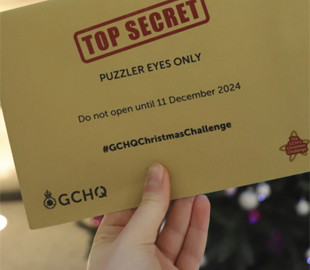
British electronic and cyber intelligence agency GCHQ on Wednesday launched its annual Christmas challenge – a holiday card that doubles as a series of challenging puzzles. The challenges are designed to encourage young people aged 11 to 18 to challenge themselves by cracking codes and searching for clues.
Organisers are encouraging teams to work together, using “outside the box thinking, creativity and perseverance” to solve seven puzzles created by GCHQ's “in-house puzzle masters.”


Postcard sent by the Director of GCHQ – Headquarters -government liaison offices– to national security agencies around the world. The puzzles first appeared in 2015 year and have become an annual tradition. You can download the postcard on the GCHQ website. It is popular among teachers: a third of British secondary schools actively use it.
However, the festive initiative has a hidden purpose. & nbsp;
GCHQ director Anne Kist-Butler said she hoped the challenges would inspire young people to study science, technology, engineering and maths (STEM) and consider careers in cyber security and intelligence.
In addition, the agency seeks to dispel popular myths about espionage, formed by images of James Bond-like agents.
“The Master of Riddles” GCHQ, known as Colin, stressed that teamwork is key to successful task solving, despite the widespread stereotype of lone geniuses.
“Don't get me wrong – we have geniuses, – said Colin, who gave only his first name through confidentiality of work. – But the main thing – it’combines the different skills of many people”.
Colin noted that the agency is looking for specialists with analytical skills, unconventional thinking and perseverance to solve complex problems.
This year's postcard features a map of the UK with the locations of GCHQ bases, including the high-tech headquarters in Cheltenham, nicknamed the “donut” because of its round shape.
The tradition of puzzle-solving and its connection to intelligence is often mentioned in the context of the work of Bletchley Park – the historic center of cryptography during World War II. It was there that mathematical geniuses, cryptologists and developers of the first computers cracked Nazi Germany's codes, thus shortening the war by two years.
According to Colin, many new employees of the agency learned about GCHQ precisely because of their passion for puzzles.
“It inspires people”, – he noted.
Despite technological progress, solving puzzles remains an area that requires human intelligence.
“Artificial intelligence can't create or solve puzzles like humans can, – Colin added. – And that's great”.

